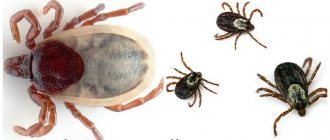Demodicosis in humans is caused by iron mites, which belong to the Demodex species. These are opportunistic microorganisms. They are part of the natural microflora of humans, under normal conditions they live with him in symbiosis, destroying other pathogenic microorganisms. With normal health and lifestyle, there is a small amount of them on human skin. They do not manifest themselves in any way and do not cause irritation or inflammation. But when unfavorable conditions occur, their number increases sharply, which leads to pain and skin rashes. Of course, the question arises: is it possible to become infected with demodicosis? Is it transmitted from person to person? To answer these questions, you need to understand what this disease is and how it develops.
Mite
The subcutaneous mite causes skin lesions in humans and animals - demodicosis. The mite settles in the hair follicles of the head, eyelashes and eyebrows, in the ducts and secretions of the sebaceous glands of the facial skin. A subcutaneous mite is a normal phenomenon, and for the time being it does not pose a danger, since it feeds on waste cells. But if the body’s defenses weaken, the mite begins to actively multiply, penetrates into the deeper layers of the skin and causes inflammation. According to the observations of researchers, women are more often affected by this disease.
FACT:
It is believed that more than 20% of people are carriers of demodicosis, but no clinical signs are detected.
Is demodicosis contagious?
Demodicosis is a disease caused by the active reproduction and activity of ticks. It is individual. That is, whether a person gets demodicosis or not depends solely on the state of his body, lifestyle and predisposition. It is possible that general and local immunity will be so strong that an increase in the number of parasites will not have a negative effect on the skin. That is, the disease is not contagious.
But you can catch ticks from another person. They are transmitted through direct contact, when using someone else's cosmetics, combs, towels, bedding and accessories. Most likely, people living together and using the same household items will become infected with ticks from each other. But this does not mean that after mites pass from one person to another, they will immediately cause skin problems.
Almost all people have Demodex mites. It is believed that up to 80 percent of the population are carriers of ticks, and the vast majority are not even aware of their existence. The child is born without these mites, but during the first week of life he receives all the skin microflora from the mother through close contact. It is very difficult to avoid such close contact, so ticks are easily transmitted. But children, especially under the age of one year, do not suffer from demodicosis, because the activity of the sebaceous glands is minimal, which means the number of mites is small.
Signs of illness
In its manifestations, damage to the subcutaneous mite is very similar to rosacea or acne. Peeling of the skin and its redness are noted, itching may occur, constant or worsening after using tonics or washing with cold water. Sometimes there is a combination of demodicosis caused by subcutaneous mites and the above-mentioned skin diseases. And this is not surprising, because the occurrence of demodicosis is influenced by negative changes in the skin. Thus, both acne vulgaris and rosacea weaken the skin’s natural defenses. When affected by skin mites, the following parts of the face are most often affected: eyelids, forehead, chin, nasolabial folds and brow ridges. Exacerbations of demodicosis occur in autumn and spring.
Subcutaneous mites: types and what affects them
There are several types of subcutaneous mites:
- Demodex (provokes demodicosis);
- Sarcoptes scabiei (sarcoptosis);
- Notoedrosis (notoedrosis);
- Cheyletiella (cheyletiellosis);
- Trombiculidae (thrombiculosis).
Infection with each of them causes specific symptoms in the animal.
Demodicosis
Most often, Demodectic mange (scabies) in cats is caused by the parasite Demodex, which is not even a mite; it is more correct to use the name glandular acne.
Demodex mites cannot be seen without a microscope
This microorganism normally lives in the hair follicles of humans and animals and feeds on sebum, which, in general, has a positive effect on skin health. But with certain metabolic disorders, Demodex has a destructive effect on the skin. Moreover, the negative impact of the parasite on the body is due to the result of its vital activity - it begins to secrete harmful toxins and dies after 15–25 days, which provokes the process of decomposition in the thickness of the skin. The result is redness, irritation, itching and suppuration.
The subcutaneous demodex mite in a cat is called opportunistic - malfunctions in the body lead to skin disease
Demodicosis, or scabies, in humans, dogs and cats is caused by different types of microorganisms. In cats, these are Demodex gatoi and Demodex cati. In humans and dogs - Demodex folliculorum. However, cats that suffer from chronic pathologies or have suffered severe stress, as well as young individuals, are susceptible to infection with the “human” tick.
Video: demodicosis in animals
Sarcoptic mange
The causative agent of sarcoptic mange is Sarcoptes scabiei.
The symptoms are similar to demodicosis, but compared to it it is more aggressive: ulcers appear, in the worst case - deep lesions of the epidermis, fistulas.
The chronic form has unpleasant consequences: the skin becomes keratinized in the affected areas, covered with pigment spots and scar-like tubercles.
With sarcoptic mange, microscopic mites devour the epidermis, causing discomfort and pain to the animal.
Notoedrosis
Notoedrosis is caused by a parasite of the genus Notoedrosis. This is the largest among subcutaneous mites. Affects the entire body of the animal. This tick is transmitted from cats to humans and pets through contact.
After infecting the host, it lives for about a month and dies. It does not reproduce in human skin (unlike animal skin). Eggs that fall on household items can become a source of spread of the disease.
Notoedrosis is a parasitic disease of cats, characterized by a high degree of contagiousness, including to humans.
Accompanied by already familiar symptoms:
- itching;
- irritation;
- hair loss.
Cheyletiellosis
The parasite Cheyletiella leads to the development of cheyletiellosis. Among the symptoms:
- the appearance of dandruff and itching;
- peeling of the skin.
It is transmitted from a sick animal to a healthy one. The lesion has clear boundaries; the skin of the back usually suffers.
Thrombiculosis
Thrombiculosis is caused by mites of the genus Trombiculidae.
This parasite is very tenacious. It lives both in the ground and on the body and skin of mammals, insects and birds. Attached in groups. There is a symbiosis of young and adult individuals. Primarily affects the mucous membranes:
- lips;
- anus;
- nose;
- eyes.
The parasite is easy to notice with the naked eye. To do this, look for soft, bright red dots measuring 0.5 mm on your cat's body. When you crush a group of such points, you will get a characteristic scarlet stain.
Video: diseases caused by subcutaneous mites in cats
Risk factors
As mentioned above, what is unpleasant is not the presence of a subcutaneous mite as such - in itself it cannot harm a healthy person - but demodicosis, which is caused by a mite. If the body is weakened and there are additional risk factors, the tick can settle in the skin for a long time and cause considerable mental and physical damage to its “breadwinner”. Risk factors include:
- dysfunction of the sebaceous glands, changes in the composition of sebum, vascular changes;
- some skin diseases (rosacea, acne, seborrhea);
- long-term use of hormonal corticosteroid ointments;
- adolescence;
- pregnancy;
- stress.
Unfortunately, non-specialists react with unacceptable ease to the appearance of acne on the face and body. The appearance of such problems is attributed to age and ordinary acne, which sooner or later should disappear on their own. We have to disappoint you: demodicosis caused by subcutaneous mites will not go away on its own. The disease can travel from one area of the skin to another, existing for years and ruining the life of its “donor”.
IMPORTANT:
squeezing out acne when infected with a subcutaneous mite only leads to an exacerbation of the infection, since during this process the mites are pressed into healthy areas of the skin and infect them.
Make an appointment
What then is possible?
To begin with, we should say what is needed - a dietary regimen during and after treatment. What about cosmetic procedures? Some of them are a real salvation in the fight against demodicosis. They help restore infected areas of the skin:
- cryotherapy - cold exposure, causing a sharp spasm of blood vessels followed by persistent dilation; result - peripheral blood supply is enhanced, skin nutrition is improved, metabolic processes are accelerated, the immune system is activated, and the skin's resistance to stress increases;
- mesotherapy - carried out during the period of remission, this is an injection procedure, the essence of which is the delivery of restorative substances contained in the preparations / cocktails to the tissues;
- plasma therapy - carried out during the period of remission, this is the introduction of purified and platelet-rich blood plasma of the patient into the affected areas of the skin; As a result, skin immunity is stimulated, and regeneration processes are launched at the cellular level.
Each of the procedures described above is prescribed in a course; to achieve a sustainable effect, on average, 5–6 procedures are required, which are carried out every 7 days.
Treatment
Treatment of demodicosis caused by subcutaneous mites is a long and difficult process. Its complexity is that often this disease develops against the background of a decrease in the body’s defenses and has accompanying skin problems. Therapy tactics include suppressing the parasite, treating underlying diseases and increasing immunity.
The most commonly used local therapy is lotions and special ointments. In more severe cases, the doctor prescribes a course of antibiotics in combination with external therapy. Sometimes plasmapheresis procedures are recommended. In special cases, even surgical intervention is possible.
An important point in the course of treatment is diet. It is necessary to exclude hot, spicy and salty foods, foods rich in carbohydrates and fats from the diet. Those who are being treated for subcutaneous mite infestation are recommended to consume large amounts of fruits, vegetables, microelements, fiber, and dairy products. During treatment, you should not use face masks, especially those containing honey. You need to limit your exposure to the sun. You should also wait until better times to visit the bathhouse and sauna.
How to avoid getting infected with demodicosis
Demodicosis can and should be treated. An integrated approach is important. First, you need to find out what diseases could cause the development of demodicosis. Usually these are gastrointestinal diseases, unhealthy diet or endocrine disorders. To cure demodicosis, you need to cure systemic diseases. Secondly, it is important to eliminate ticks. Antimicrobial and antiparasitic agents are prescribed for this purpose by a dermatologist.
Treatment of demodicosis includes the use of external agents and specialized cosmetics. The Stop Demodex and Demolan Forte series of products help cure demodicosis. They include all the necessary products for caring for the skin of the face, eyelids and head: cream, soap, lotion, mask, eye gel, shampoo, etc. You can use them at home, it is important to observe regularly. Demodicosis is treated for a long time - depending on the area and degree of damage, it can take from a couple of months to a year.
In addition to using medications, it is important to boost your immunity and periodically drink vitamin and mineral complexes. It is also necessary to carefully observe personal hygiene, do not use other people’s things, and refrain from using cosmetics or visiting a solarium or bathhouse during treatment. It is advisable to quit smoking, reduce alcohol consumption, follow a diet or adhere to proper nutrition. In this case, treatment will be more effective and faster. And if you use the above means for prevention, then it will be impossible to catch ticks again.
Laboratory diagnostics
If you have a history of persistent styes, eyelash loss, chronic acne and rosacea, then demodicosis can be suspected with a high degree of probability. However, laboratory testing is necessary for an accurate diagnosis.
Preparing for diagnosis
- Two days before the procedure, it is prohibited to apply decorative and medicinal cosmetics to the face.
- Do not apply eye drops the day before.
- Do not wash or wet your face for 24 hours.
Methodology
The procedure is carried out in the evening, when mites crawl to the surface of the skin and are easier to detect. Eight cilia are taken from each eye - four from the upper eyelid and four from the lower eyelid, placed on a glass slide in an alkali solution and examined under a microscope at low magnification.
Interpretation of the result
- The absence of mites, eggs, larvae - the result is negative.
- The presence of empty egg shells is a positive result, but requires repeating the analysis.
- The presence of at least one tick – demodicosis is diagnosed.
- Detection of more than ten mites – pronounced infestation.
Attention! A negative result does not always guarantee the absence of parasites.
Prevention
It is not possible to completely protect yourself from infection with demodicosis, just as it is not possible to protect yourself from simple tick bites in nature. But you can reduce the likelihood of disease with a few simple rules:
- increased attention to personal hygiene: using only personal towels, combs, household items, washing hands after going outside, ironing clothes after washing;
- It is advisable to limit alcohol consumption and smoking;
- taking a complex of vitamins and minerals to maintain immunity, especially in the autumn and spring;
- proper nutrition will ensure the supply of vitamins to the body, which is necessary primarily for the normal functioning of the immune system: include more fruits and vegetables in the diet, replace sweet carbonated drinks with freshly squeezed juices and fruit drinks;
- At night, be sure to wash your face thoroughly to remove makeup and street dust;
- a preventive visit to a dermatologist to recognize any disease in the early stages.
By adhering to simple rules of prevention, knowing the symptoms of demodex and how the disease is transmitted, you can protect yourself from such an unpleasant disease as skin demodicosis.
Symptoms
Photo 2. Eye mites - symptoms of blepharitis.
In the initial stage of demodectic blepharitis, clinical manifestations are practically absent. Subsequently, with the increase in the reproduction of ticks, their waste products cause the appearance of the following symptoms:
- itching and burning of the eyes;
- redness, swelling, inflammation of the edges of the eyelids;
- sticky, thick discharge that accumulates in the corners of the eyes;
- sticking of eyelashes, appearance of scales and crusts on them;
- eyelash loss;
- dry eye syndrome.
Routes of infection
A subcutaneous mite in a cat can appear when it is transmitted through fur, saliva, or microscopic injuries at the time of contact of an already affected animal with a healthy pet. Only the four-legged pet that is currently suffering from reduced immunity or impaired metabolic processes within the body will become infected.
Modern veterinarians consider the following to be the highest risk groups:
- elderly individuals;
- pregnant cats;
- pets with already developed chronic diseases.
As for kittens, they can get an infection from a sick mother while in utero development. Transmission of subcutaneous mites is possible through any hygiene products with which the cat is in direct contact. If a cat has a sufficiently strong immune system, then it is highly likely that it will become a carrier of infection, but will not get sick.
Reviews
Below are some reviews. If you have something to say, leave your feedback in the comments below the article, it will be useful to our readers.
“
I suffered from demodicosis once – after an unsuccessful outdoor recreation. I the symptoms literally on the second day , and at first I mistook it for conjunctivitis.But I was alarmed that the eyes themselves did not hurt or water, and pus formed only on the eyelashes.
During the examination, the doctor diagnosed the disease and prescribed metronidazole gel.
The treatment took about a month , after which the signs of the disease completely disappeared.”
Boris Shebanov, 38 years old.
“
My daughter became infected with demodicosis from one of her friends. The disease immediately manifested itself to the maximum:
the girl’s eyes itched, pus formed on her eyelashes every morning , and on her pillow I found fallen eyelashes for two or three days in a row, which had never happened before. The doctor recommended several ointments, including ichthyol ointment and demalan gel.The treatment was long (more than a month and a half), but with each week the improvements were evident.”
Snezhana Tsvirko, Pskov.
Pathogenesis
Anatomically, blepharitis is divided into anterior and posterior. Invasion of the eyelash follicles is referred to as anterior blepharitis. In case of damage to the meibomian glands - about the posterior one.
Factors determining the negative impact:
- Mechanical damage.
Eating epithelial cells by mites disrupts the direction of eyelash growth, increases their loss, and contributes to the development of trichiasis. The internal cavity of the hair follicles increases, hyperkeratosis and mild perifolliculitis occur. Mechanical blockage of the meibomian gland ducts by parasites causes their hypersecretion and inflammation - chalazion.
- Secondary infection.
Tick-borne blepharitis is often complicated by a secondary infection, staphylococcal or streptococcal, which can lead to the development of purulent conjunctivitis and ulcerative blepharitis.
- Allergic reaction.
Mite waste products and dead individuals have a toxic-allergic effect on the membranes of the eye, and eyelid dermatitis develops.
Reasons for the development of the disease
Keep in mind! Typically, pathogens such as demodex do not survive in the human body.
But they can become active and begin to reproduce under the following conditions that reduce the functionality of defense mechanisms:
- hormonal changes;
- constant presence of a person in conditions of elevated external temperature. For example, in areas with a hot climate or when constantly working in conditions of elevated ambient temperature;
- any ophthalmological and dermatological infectious and inflammatory pathologies;
- constant exposure to open sunlight.
Demodex can be transmitted by contact through household objects , but cases when the tick passes to humans from domestic and wild animals cannot be excluded.











